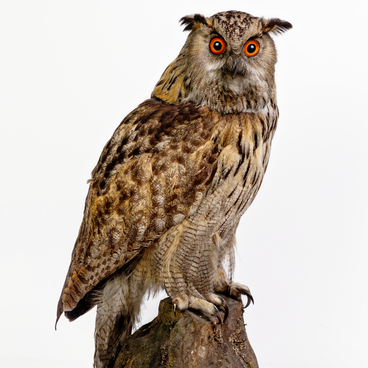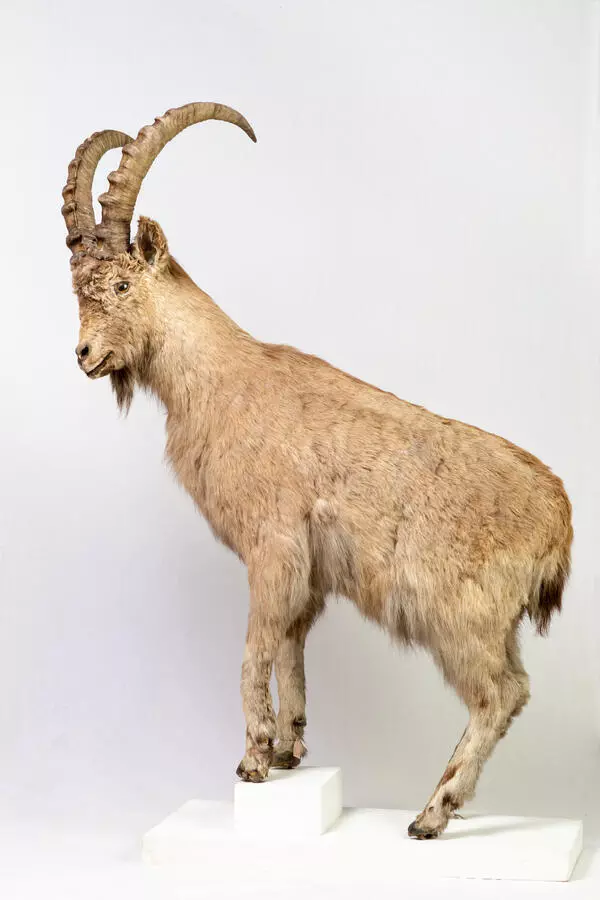The wolf is the largest predatory mammal of the canid family. Its height at the withers averages 86 centimeters, and its body length is about 160 centimeters. The wolf usually weighs up to 62 kilograms. Although, there are also much larger individuals. The fur is thick, long, and consists of two layers. The first is tough hair that repels water and dirt. The second layer is the undercoat, which includes a waterproof down that warms the animal. In late spring or early summer, the fluff clumps off the body. To facilitate molting, wolves rub against rocks or tree branches.
The habitat of the wolf in Buryatia is very wide. It settles in forest steppes, forests, and rises in mountainous areas of the forest steppe. In many places, the wolf is hunted as a species that poses a potential danger to humans and livestock.
A wolf is a territorial creature. Breeding pairs, and often flocks, live sedentary in certain areas. They mark their borders with odorous marks. The diameter of the territory occupied by the flock in winter is usually 30-60 km. In spring and summer when the flock breaks up, the area it occupies is divided into several sections.
To breed offspring, animals make dens in natural shelters, such as crevices in rocks, thickets, of bushes. Sometimes wolves occupy the burrows of badgers, marmots, and other animals. Less often they dig them themselves.
The wolf can reach speeds of up to 60 km/h. It accelerates to a gallop in just a few seconds. During the night, these animals are able to walk up to 80 kilometers. Wolves can hear sound signals at a distance of up to 9 kilometers, smell prey for 3 kilometers, and can distinguish many different shades of smell. Surprisingly, these brave predators are afraid of the fabric fluttering in the wind. This feature led to the appearance of hunting wolves with flags.
Among the Buryat-Mongol people, the wolf is a totem animal. According to legends, the progenitor of one of the Buryat clans called ‘shono’ was a she-wolf who nursed a boy with its milk. And it was that she-wolf, from which this clan has originated. The sacredness of the image of the wolf is revealed in the taboo of the name of the beast. The wolf was spoken about respectfully and allegorically considering that it has a heavenly origin.
The habitat of the wolf in Buryatia is very wide. It settles in forest steppes, forests, and rises in mountainous areas of the forest steppe. In many places, the wolf is hunted as a species that poses a potential danger to humans and livestock.
A wolf is a territorial creature. Breeding pairs, and often flocks, live sedentary in certain areas. They mark their borders with odorous marks. The diameter of the territory occupied by the flock in winter is usually 30-60 km. In spring and summer when the flock breaks up, the area it occupies is divided into several sections.
To breed offspring, animals make dens in natural shelters, such as crevices in rocks, thickets, of bushes. Sometimes wolves occupy the burrows of badgers, marmots, and other animals. Less often they dig them themselves.
Wolves are active at night. They hunt ungulates, livestock, and even attack dogs. They also catch smaller prey, such as hares, mouse-like rodents, and birds. Unlike many other predators, wolves often return to the uneaten remains of their prey, especially in times of famine. They use howling as a means of communication. This is how they talk to their pack. But during hunting, animals, as a rule, do not make unnecessary sounds and move noiselessly so as not to frighten the prey.
The wolf can reach speeds of up to 60 km/h. It accelerates to a gallop in just a few seconds. During the night, these animals are able to walk up to 80 kilometers. Wolves can hear sound signals at a distance of up to 9 kilometers, smell prey for 3 kilometers, and can distinguish many different shades of smell. Surprisingly, these brave predators are afraid of the fabric fluttering in the wind. This feature led to the appearance of hunting wolves with flags.
Among the Buryat-Mongol people, the wolf is a totem animal. According to legends, the progenitor of one of the Buryat clans called ‘shono’ was a she-wolf who nursed a boy with its milk. And it was that she-wolf, from which this clan has originated. The sacredness of the image of the wolf is revealed in the taboo of the name of the beast. The wolf was spoken about respectfully and allegorically considering that it has a heavenly origin.






